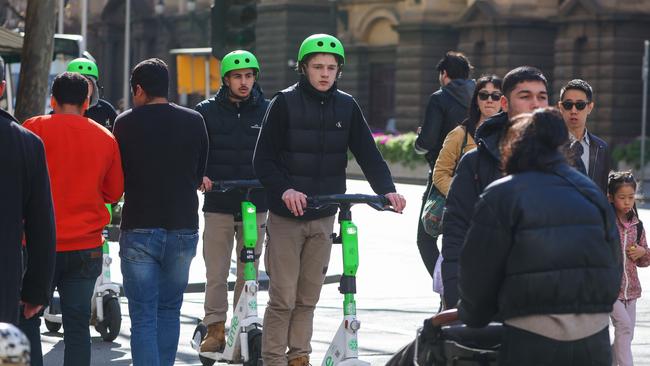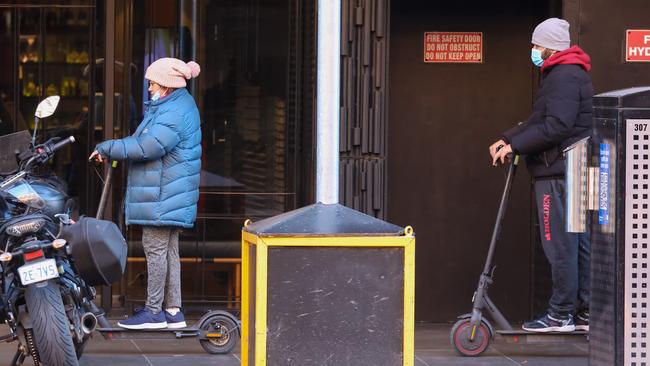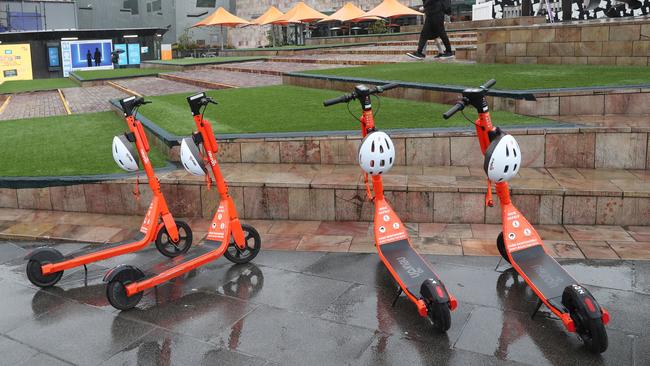E-scooter riders warned about rules when riding in each state and territory
People opting to use e-scooters to travel around might not be aware of the rules that could be costly if disobeyed while riding.
On the Road
Don't miss out on the headlines from On the Road. Followed categories will be added to My News.
Riders jumping on their e-scooter instead of getting behind the wheel of a car after drinking alcohol could still face significant penalties, including the risk of losing their driver’s licence.
Slater and Gordon Legal Counsel for work and road claims, Jess Lyons, said at least two people have reportedly lost their driver’s licenses for offences while using an e-scooter.

“While there are some differences between the road rules when it comes to two wheels versus four wheels, there is still plenty of overlap and penalties apply if rules are broken,” Ms Lyons said.
“While there are different rules that govern e-scooter laws depending on where you are in Australia, in all states and territories the rules regarding alcohol and drug use are largely the same as those for motor vehicle drivers.
“Riders must not have a blood alcohol concentration (BAC) exceeding 0.05 or be under the influence of illicit substances.
“In Queensland, riders can be charged if their BAC exceeds 0.15, and in all states, this can lead to fines, court appearances, and the loss of your driver’s license.”
Ms Lyons said different states have different rules for operating an e-scooter.
For West Australia, Queensland, ACT and Tasmania, e-scooters are permitted on bike paths, shared paths, and some local roads.
However, riders are restricted to go on roads with a speed limit exceeding 50km/hr, roads with dividing lanes, or paths marked “no wheeled devices”.

Meanwhile, in NSW, Victoria and South Australia, riding privately owned e-scooters in public spaces, including roads and footpaths, is illegal.
“In New South Wales, Victoria and South Australia if you ride in a prohibited area, you could face some heavy penalties including fines, court appearances, and the potential loss of your driver’s license,” Ms Lyons said.
E-scooters can only be used on private property unless riders are part of designated trial areas in NSW and Victoria.
When it comes to speed, riders in Queensland, Western Australia and the ACT are allowed to travel at a maximum speed of 25km/hr on bike paths, shared paths, and local roads, with reduced limits on footpaths.
In Tasmania, e-scooters are permitted to travel up to 15km/hr on footpaths and 25km/hr on roads and cycle paths.

Ms Lyons said riders should always be aware of their speed when riding an e-scooter.
“Much like in a car, if you’re caught speeding on an e-scooter you could get a hefty fine, or a suspended license, like a man in Queensland who in 2022 was caught on camera speeding at 94km/hr while helmet-free trying to make it to work on time,” she said.
“He was given a $575 fine, and the minimum penalty for a dangerous driving offence, which was a six-month disqualification of his driver’s license.”
E-scooters must be registered and have compulsory third-party insurance if used outside of private properties.
Helmets are also mandatory in all states and territories.
Originally published as E-scooter riders warned about rules when riding in each state and territory





